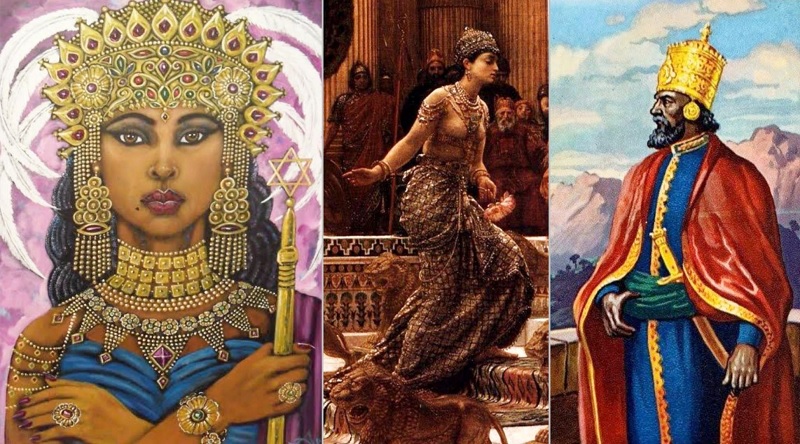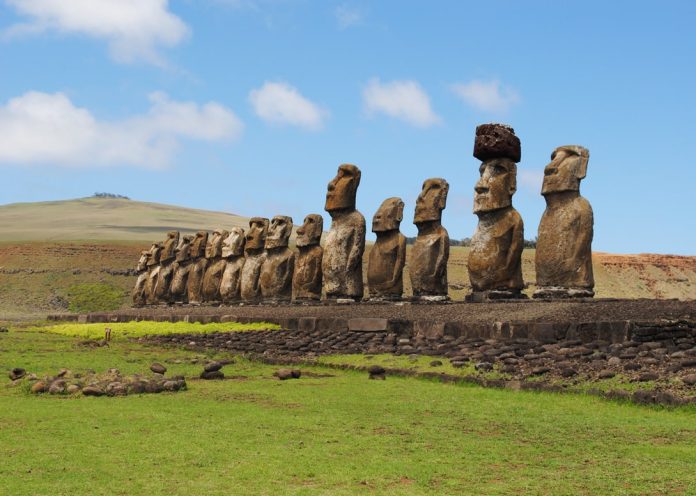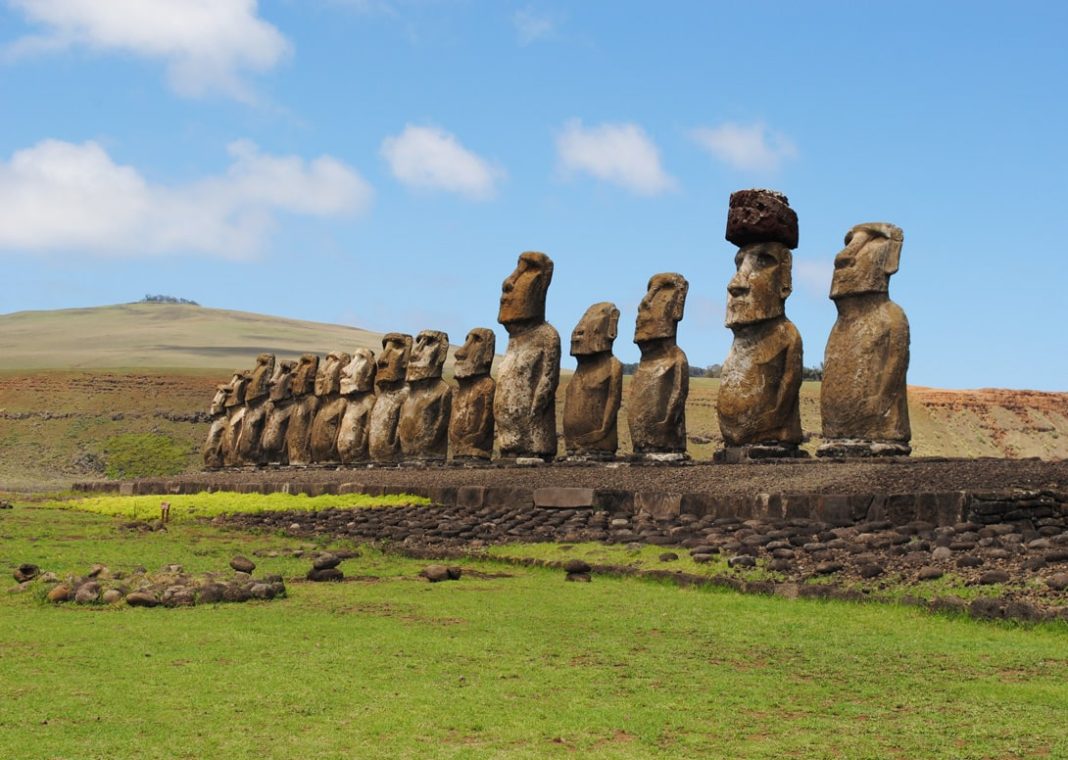The captivating saga of King Solomon and the Queen of Sheba has stirred the imaginations of generations, blending tales of wisdom and opulence into a rich tapestry of legend. Recent archaeological revelations, however, offer tangible glimpses into the reality behind these mythical rulers.
Excavations within Sheba’s domain unearthed an ancient gold mine bearing her insignia, echoing the biblical narratives of her legendary wealth. Similarly, discoveries near Solomon’s kingdom revealed artifacts hinting at a thriving copper industry during his reign, lending credence to the tales of his splendor. Yet, beyond material riches, Solomon and Sheba symbolize a bygone era of diplomatic finesse and economic might. Their encounter transcends mere folklore, showcasing an egalitarian exchange marked by mutual admiration and intellectual discourse.
In this exploration hosted by Mystery Uncover, we delve into the nuanced dynamics of their meeting, examining the shared responsibilities and intellectual camaraderie that defined their relationship. We unravel the mysteries surrounding these enigmatic monarchs and endeavor to discern the truth amidst the layers of legend.
The Legendary Wealth of Solomon and Sheba
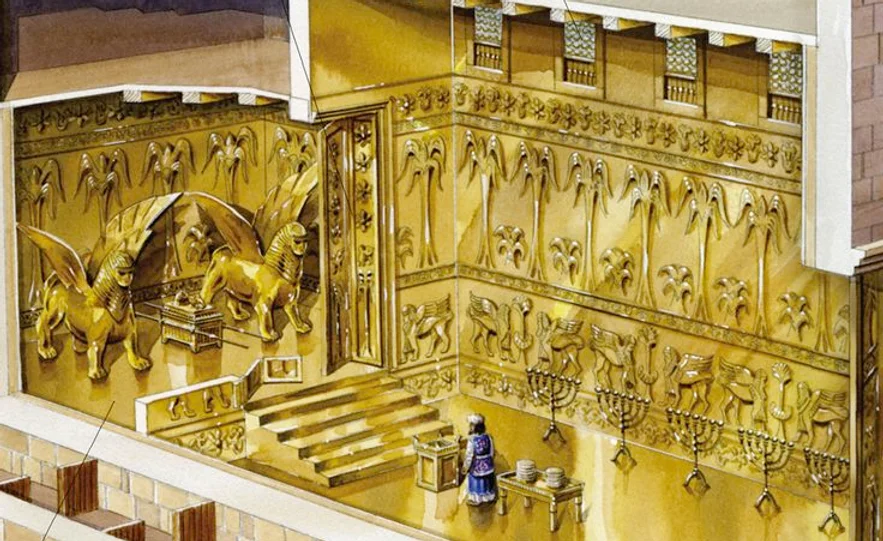
The biblical tale of King Solomon and the Queen of Sheba has long captivated the imagination, not only for its depiction of wisdom and diplomacy but also for the legendary wealth attributed to these ancient monarchs. According to biblical accounts, both Solomon and the Queen of Sheba were renowned for their opulence, with descriptions of lavish gifts and extravagant displays of riches.
But beyond mere legend, recent archaeological discoveries have lent credence to the notion of their extraordinary wealth. Excavations in Sheba’s territory unearthed an ancient gold mine dating back to her era, complete with a stone slab bearing her sigil. Similarly, investigations near ancient copper mines in Israel’s Timna Valley revealed artifacts linked to King Solomon’s reign, suggesting a flourishing industry during his time.
These findings not only add tangible evidence to the biblical narratives but also shed light on the economic prowess of Solomon and Sheba. They were not merely figures of myth but influential rulers who presided over vast wealth and resources, shaping the political and economic landscape of their time.
The significance of Solomon and Sheba’s wealth extends beyond mere material possessions. It speaks to their ability to wield power and influence on a grand scale, fostering diplomatic relations and trade networks that stretched across continents. Their legendary riches served as a symbol of prosperity and prestige, attracting visitors from far and wide, including the Queen of Sheba herself.
In the next sections, we will delve deeper into the egalitarian relationship between King Solomon and the Queen of Sheba, exploring their intellectual exchange and shared responsibilities. We will also examine insights from biblical narratives, uncovering the nuances of their encounter and the enduring legacy of Solomon and Sheba in cultural interpretations and legends. Join us as we unravel the mysteries surrounding these ancient rulers and uncover the truth behind the legend of “Solomon and Sheba.”
The Egalitarian Encounter: King Solomon and the Queen of Sheba
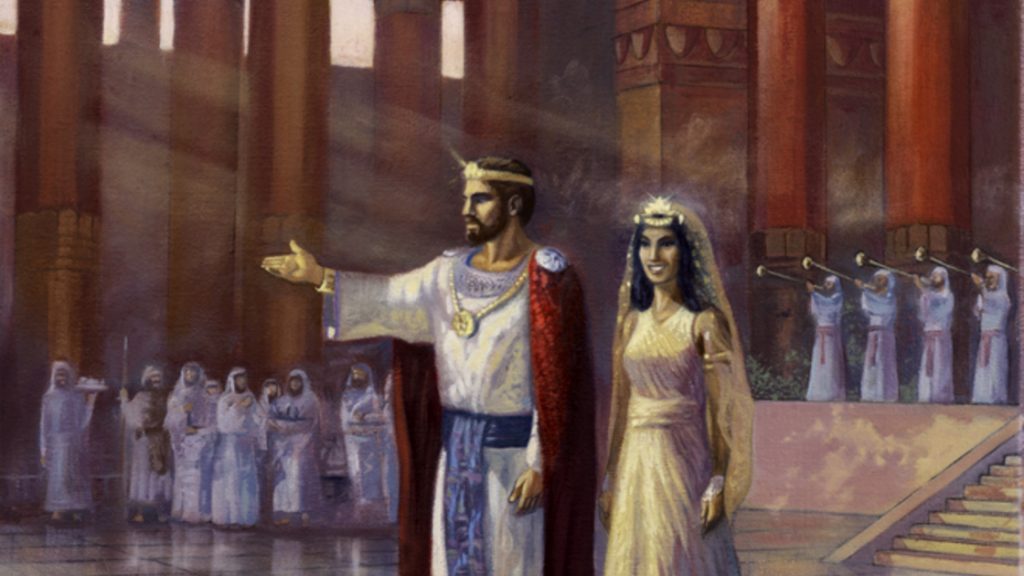
In the biblical accounts of King Solomon and the Queen of Sheba, we uncover a fascinating portrayal of an egalitarian meeting between two influential monarchs. Contrary to traditional power dynamics of the time, their encounter highlights a remarkable sense of respect, fairness, and shared responsibilities.
As depicted in biblical texts, the meeting between King Solomon and the Queen of Sheba is characterized by mutual admiration and intellectual exchange. Both monarchs are portrayed as equals in rank, education, and statesmanship, setting aside traditional notions of dominance and submission. Their interaction underscores a sense of respect for each other’s wisdom and leadership qualities, transcending societal expectations.
Analysis of their encounter reveals a remarkable balance of power, with neither monarch asserting dominance over the other. Instead, they engage in a dialogue marked by mutual appreciation and admiration for their respective strengths. King Solomon listens attentively to the Queen of Sheba’s inquiries and addresses them with patience and clarity, demonstrating a commitment to open communication and mutual understanding.
Moreover, the exchange of gifts between Solomon and Sheba further emphasizes the egalitarian nature of their meeting. Both monarchs offer lavish presents indicative of their wealth and status, without any sense of superiority or condescension. This gesture underscores a spirit of reciprocity and goodwill, highlighting the shared responsibilities inherent in diplomatic relations.
Overall, the egalitarian encounter between King Solomon and the Queen of Sheba challenges traditional notions of power and hierarchy, offering a glimpse into a relationship built on mutual respect and cooperation. As we delve deeper into the narrative of “Solomon and Sheba,” it becomes increasingly clear that their story transcends mere legend, offering valuable insights into the complexities of ancient diplomacy and interpersonal relations.
Insights from Biblical Narratives: Solomon, Sheba, and Trade
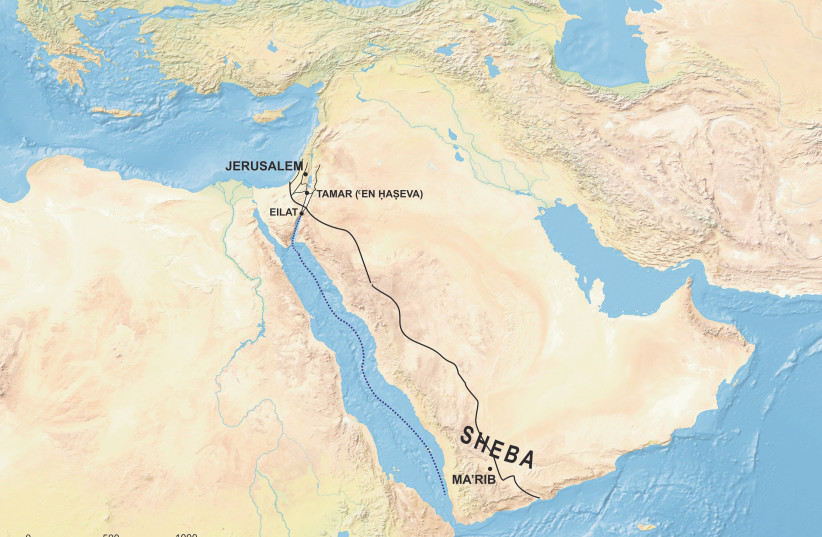
Delving into the biblical narratives surrounding King Solomon and the Queen of Sheba’s encounter unveils a rich tapestry of intellectual exchange and trade relations. Their legendary meeting immortalized in scripture, offers valuable insights into the diplomatic and economic dynamics of the ancient world.
According to biblical accounts, the Queen of Sheba journeyed to Jerusalem to test King Solomon’s renowned wisdom. What ensued was not merely a display of intellectual prowess but also a diplomatic exchange of gifts and gestures of goodwill. The Queen arrived with a retinue of servants bearing precious gifts, including gold, precious stones, and spices, indicative of her kingdom’s wealth and trade networks.
In turn, King Solomon reciprocated with gifts that surpassed even the Queen’s generous offerings, showcasing the opulence of his own kingdom. Beyond the material exchange, their encounter underscored the importance of diplomatic relations and trade alliances in ancient times.
The portrayal of Solomon and Sheba’s respective kingdoms in the biblical narratives further illuminates their significance in history. Solomon’s kingdom is depicted as a beacon of wisdom and prosperity, while Sheba’s realm is renowned for its wealth and abundance. Their meeting symbolizes the intersection of two powerful empires, each contributing to the cultural and economic tapestry of the ancient Near East.
As we unravel the intricacies of their encounter, it becomes evident that the story of “Solomon and Sheba” transcends mere legend. It offers valuable insights into the complexities of ancient diplomacy, intellectual exchange, and trade relations. Join us as we delve deeper into the narrative, exploring the truth behind the legendary tale of Solomon and Sheba.
Queen of Sheba in the New Testament and Beyond
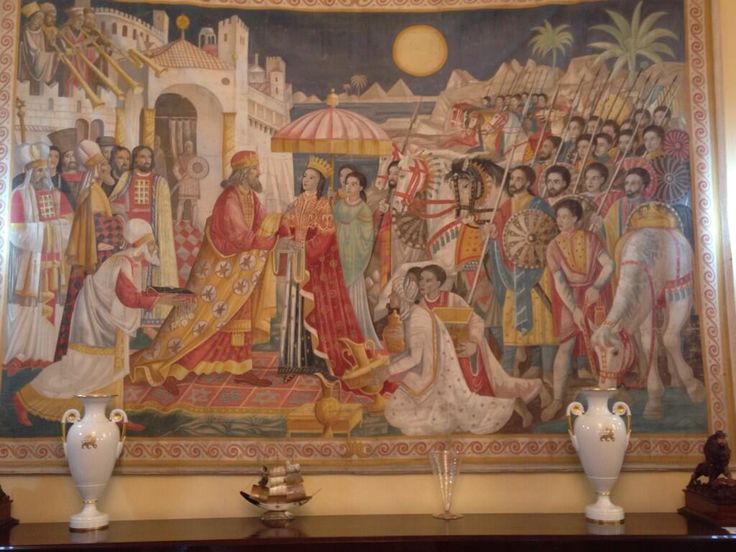
The Queen of Sheba’s presence extends beyond the pages of the Old Testament, resonating even in the New Testament with Jesus himself affirming her historical visit. In both Matthew and Luke’s accounts, Jesus refers to her as the “queen of the South,” acknowledging her journey to meet King Solomon and her recognition of his wisdom.
Jesus’ affirmation of the Queen of Sheba’s visit lends credence to the historical significance of her encounter with Solomon. It suggests that her journey was not merely a myth or legend but a documented event recognized even in the teachings of Jesus.
Beyond biblical narratives, the Queen of Sheba’s legacy endures in various traditions and cultures around the world. In Islamic tradition, she is known as Bilqis, and her visit to Solomon is recounted in the Quran. Similarly, Ethiopian tradition venerates her as Makeda, the legendary queen who bore Solomon’s son, Menilek, and initiated Ethiopia’s royal lineage.
The Queen of Sheba’s story has inspired countless interpretations and adaptations, from literature and art to folklore and theater. Her journey to meet Solomon symbolizes curiosity, wisdom-seeking, and the pursuit of knowledge, resonating with audiences across cultures and generations.
As we explore the historical and cultural significance of the Queen of Sheba, it becomes evident that her story is not just a fable but a testament to the enduring power of curiosity and diplomacy. Join us as we unravel the mysteries surrounding the legendary figure of the Queen of Sheba and her timeless connection to the story of Solomon.
Frequently Asked Questions (FAQs)
1. What archaeological evidence supports the wealth of Solomon and Sheba?
Excavations in Sheba’s territory unearthed an ancient gold mine bearing her insignia, while discoveries near Solomon’s kingdom revealed artifacts hinting at a thriving copper industry during his reign.
2. How does the biblical narrative align with recent archaeological findings?
The biblical accounts of Solomon and Sheba’s wealth are supported by recent discoveries, such as the gold mine in Sheba’s domain and artifacts found near ancient copper mines in Israel.
3. What was the nature of the encounter between King Solomon and the Queen of Sheba?
The encounter between King Solomon and the Queen of Sheba was characterized by mutual admiration, intellectual exchange, and the exchange of lavish gifts.
4. What insights do biblical narratives offer into the diplomatic and economic dynamics of Solomon and Sheba’s time?
Biblical narratives highlight the importance of diplomatic relations and trade alliances in the ancient world, as evidenced by the gifts exchanged between Solomon and Sheba.
5. How does the story of Solomon and Sheba resonate in different cultural traditions?
The story of Solomon and Sheba has inspired diverse interpretations across Jewish, Islamic, and Ethiopian traditions, each adding layers of richness to their legacy.
6. What shared characteristics do King Solomon and the Queen of Sheba possess?
Both King Solomon and the Queen of Sheba exhibit exceptional wisdom, linguistic prowess, diplomatic skills, and esteemed positions in their respective kingdoms.
7. What is the enduring significance of the story of Solomon and Sheba?
The story of Solomon and Sheba continues to captivate audiences worldwide, serving as a testament to the enduring power of wisdom, diplomacy, and mutual respect.
In exploring the narrative of King Solomon and the Queen of Sheba, it becomes evident that they share several remarkable characteristics as depicted in biblical texts. Both figures emerge as prominent leaders known for their wisdom, diplomacy, and esteemed positions in their respective kingdoms.
Firstly, both Solomon and the Queen of Sheba exhibit exceptional linguistic prowess, earning them the title of wordsmith. Solomon, credited with authoring numerous proverbs and songs, demonstrates his intellectual depth through his written works. Similarly, the Queen of Sheba engages in intellectual exchange with Solomon, posing challenging questions and engaging in meaningful dialogue during her visit to his court.
Moreover, both monarchs are portrayed as attentive listeners, valuing the insights and perspectives of others. Solomon’s reputation for wisdom is not solely based on his ability to speak but also on his capacity to listen and understand. Likewise, the Queen of Sheba demonstrates her keen interest in Solomon’s wisdom by actively engaging in conversation and seeking knowledge during her encounter with him.
Additionally, Solomon and the Queen of Sheba emerge as skilled dealmakers, adept at navigating diplomatic relations and trade agreements. Their interaction involves the exchange of valuable gifts, symbolizing the mutual respect and goodwill between their kingdoms.
Lastly, both figures are beloved leaders who are revered by their people. Solomon’s reign is characterized by prosperity and stability, while the Queen of Sheba’s visit to Solomon’s court highlights her esteemed status as a respected monarch in her own right.
In summary, the shared characteristics of wordsmiths, listeners, dealmakers, and beloved leaders between King Solomon and the Queen of Sheba underscore the complexity and depth of their historical narrative. As we delve deeper into their story, we continue to unravel the fascinating connection between these two legendary figures.
Literary Details and Interpretations
Exploring the biblical narratives of Solomon and Sheba unveils intriguing literary details that enrich the story and offer deeper insights into their characters and relationship dynamics.
One notable aspect is the portrayal of characters, particularly Solomon and the Queen of Sheba. Solomon is depicted as a wise and prosperous king, known for his intellectual prowess and diplomatic skills. Conversely, the Queen of Sheba emerges as a formidable and intellectually curious leader, challenging Solomon with her inquiries and engaging in intellectual discourse.
The narrative structure of their encounter also holds significance. The parallel accounts in 1 Kings and 2 Chronicles present a balanced and egalitarian meeting between the two monarchs, emphasizing mutual respect and shared responsibility. This structure highlights the importance of diplomatic relations and showcases the strength of their intellectual exchange.
Furthermore, textual hints and symbolism add depth to the story. For instance, Solomon’s silence during the Queen of Sheba’s visit is a notable detail that underscores her prominence and agency in the narrative. Additionally, the exchange of gifts between Solomon and Sheba serves as a symbolic gesture of goodwill and diplomacy between their kingdoms.
Interpretations of the biblical narrative vary, with some scholars questioning the historical accuracy of the account. However, regardless of historical integrity, the story of Solomon and Sheba continues to captivate audiences with its rich literary details and timeless themes of wisdom, diplomacy, and mutual respect.
In conclusion, the literary details and interpretations found within the biblical narratives of Solomon and Sheba offer valuable insights into their characters and relationship dynamics. While the question of historical truth may remain debated, the enduring allure of their story lies in its profound literary depth and universal themes.
Legends and Cultural Interpretations
Beyond the biblical accounts, the story of Solomon and Sheba has inspired a tapestry of legends and cultural interpretations across various traditions, each adding layers of richness to their legacy.
Jewish, Islamic, and Ethiopian traditions offer diverse perspectives on the encounter between King Solomon and the Queen of Sheba. In Jewish tradition, Solomon’s wisdom and Sheba’s visit are highlighted, often portraying her as a powerful queen testing Solomon’s intellect. Islamic narratives present Sheba as a figure who converts to Islam after encountering Solomon’s wisdom, while Ethiopian tradition elevates Sheba to the status of Makeda, a philosopher queen engaged in deep philosophical debates with Solomon.
Artistic representations further contribute to the cultural interpretations of Solomon and Sheba. From medieval manuscripts to Renaissance paintings, artists have depicted the encounter in various ways, capturing the essence of their relationship and the grandeur of their kingdoms. These artistic interpretations not only showcase the visual beauty of the story but also offer insights into the cultural values and beliefs of different periods.
The impact of these legends and cultural interpretations on the legacy of the Queen of Sheba is profound. Across cultures, she is celebrated as a symbol of wisdom, power, and beauty, embodying ideals of leadership and intellect. These interpretations have shaped how Sheba is remembered and revered in different parts of the world, contributing to her enduring legacy as a legendary figure.


